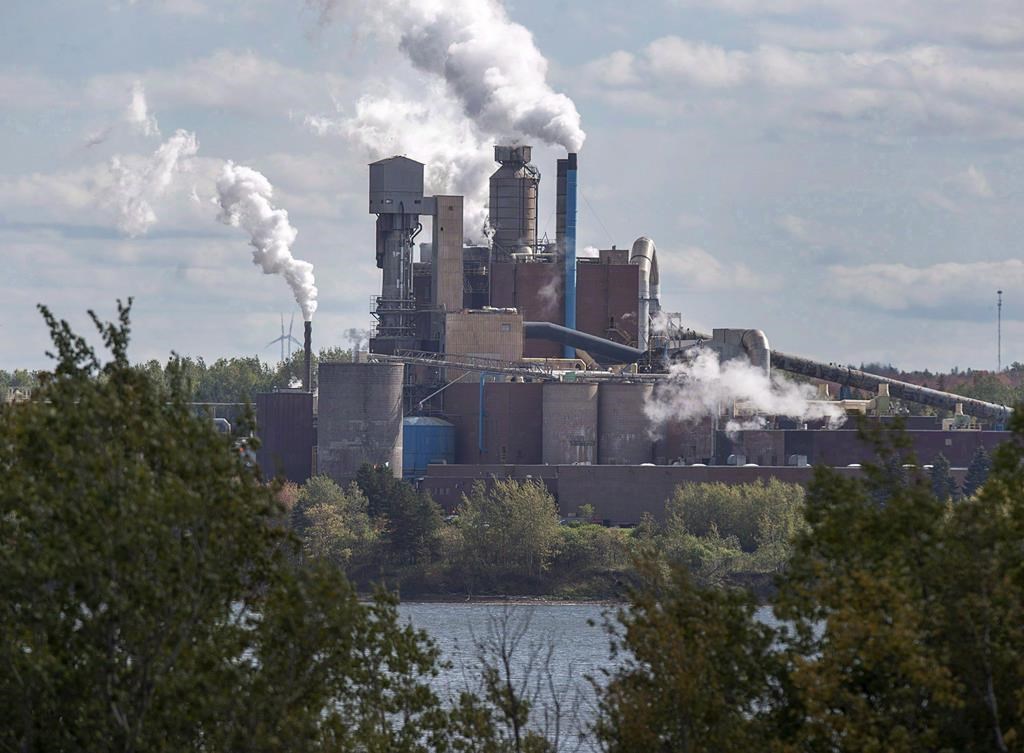Northern Pulp has formally registered its project to replace the effluent treatment facility in Boat Harbour with Nova Scotia’s Environment Department.

More than 1,700 pages of environmental assessment documents submitted by the mill were published Thursday on the department’s website.
The mill says its proposal will have no significant environmental impact.
The formal move kicked off the 30-day public comment period for the controversial project that includes a new, 15.5-kilometre-long pipeline that will carry millions of litres of treated wastewater to the Northumberland Strait.
Northern Pulp called the registration a “significant milestone” for a project it says is “vital to the continued operation of Northern Pulp, anchor to Nova Scotia’s forest industry.”
“We all have the same goal which is to see Boat Harbour returned to its natural state,” said Bruce Chapman the mill’s general manager.
“We simply need more time to carry out due diligence in each phase from environmental assessment, to construction and commissioning of this new facility.”
However, Premier Stephen McNeil has said he has no intention of changing a legislated deadline to close Boat Harbour by Jan. 31, 2020.
McNeil has also said that he would debate changes to the deadline in the legislature if they evolve out of a community consensus in Pictou County and are brought forward by the area’s Opposition members.
Boat Harbour’s current heavily polluted treatment lagoon is on the edge of the Pictou Landing First Nation.

Get daily National news
Despite the province’s stated position on the deadline, the company has set out a construction schedule it estimates will take 21 months from the time it gets the required permits and approvals that would allow construction to begin this spring.
It says the effluent treatment facility, pipeline and marine outfall for the effluent would all be fully operational during the “fourth quarter of 2020.”
The plan calls for a biological activated sludge treatment facility to be purchased from Paris-based Veolia Water Technologies, to be located on company property not far from the existing plant.
The documents say the effluent pipeline would be constructed within the right of way and “predominately within the existing road shoulder” of Highway 106 for about 11.4 kilometres, then enter waters near the Northumberland Ferries terminal.
The pipe would continue for about 4.1 kilometres through Caribou Harbour to the Northumberland Strait, where the effluent would be discharged through an engineered diffuser.
At a diameter of 900 millimetres, the high density polyethylene pipe will be buried for the majority of the route. It will be above ground to cross the spillway of the Pictou Causeway, where it will be suspended and attached to the exterior of the bridge.
It will be buried adjacent to the navigation channel for the Northumberland Ferries and be weighted down using concrete collars. The company says it’s anticipated the marine portion of pipe will be placed in a three-metre deep open-cut trench which will be backfilled with existing material.
The end of the effluent pipe consists of an outfall with a three-port diffuser at a depth of 20 metres. The diffuser pipe will be approximately 50 metres long, with three outlets spaced 25 metres apart.
The outfall will be capable of discharging up to 85 million litres of effluent per day.
The company says the treated effluent it plans to pump into the Strait will meet federal regulations for emissions, but opponents including local fishermen contend there’s a lack of scientific evidence regarding how the waste will affect the long-term health of the lucrative lobster and crab fisheries.
Water quality for the diffuser will reach ambient conditions within less than two metres from the diffuser, the documents say, “in terms of total nitrogen, total phosphorus, TSS, DO, pH, and salinity.” They say water colour will return to ambient conditions within five metres of the diffuser.
“Thus, significant residual effects to water quality or sediment quality as a result of treated effluent discharge are not likely.”
The company also says modelling results have indicated that there are few traces of “relatively high diluted effluent” after 30 days.
“Based on the results of this assessment, with planned mitigation and using best practices to avoid or minimize adverse effects, the wastewater treatment facility’s effect on the environment during all phases is rated as not significant,” the company said in its news release.
The public has until March 9 to submit comments by mail or via an online forum. Environment Minister Margaret Miller is to decide whether the project can be granted conditional environmental assessment approval by March 29.

_848x480_1435448387924.jpg?w=1200&quality=70&strip=all)









Comments